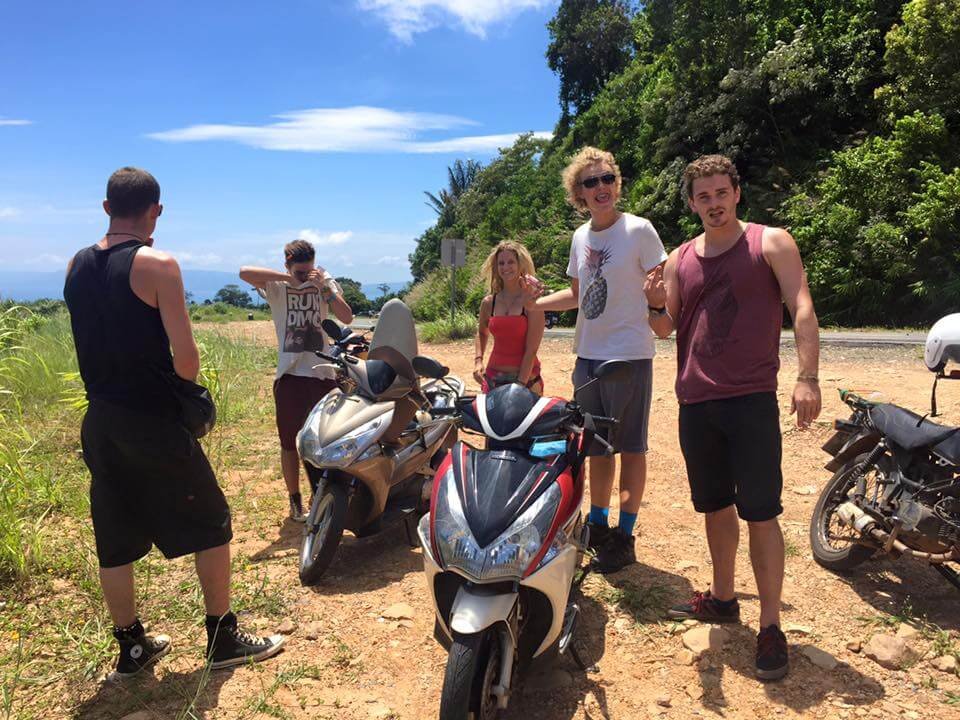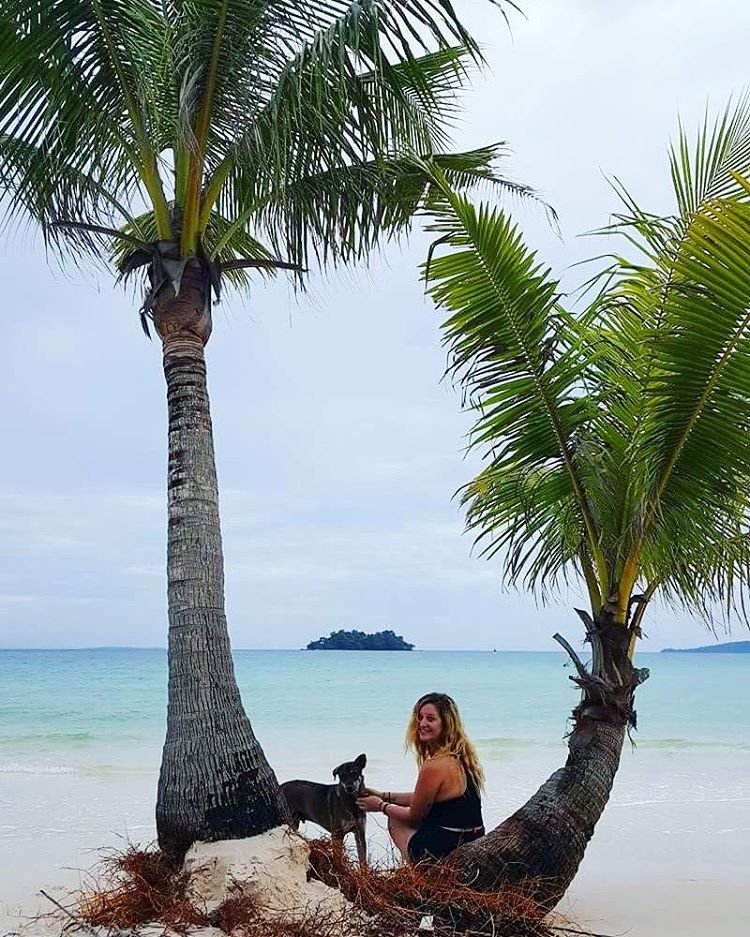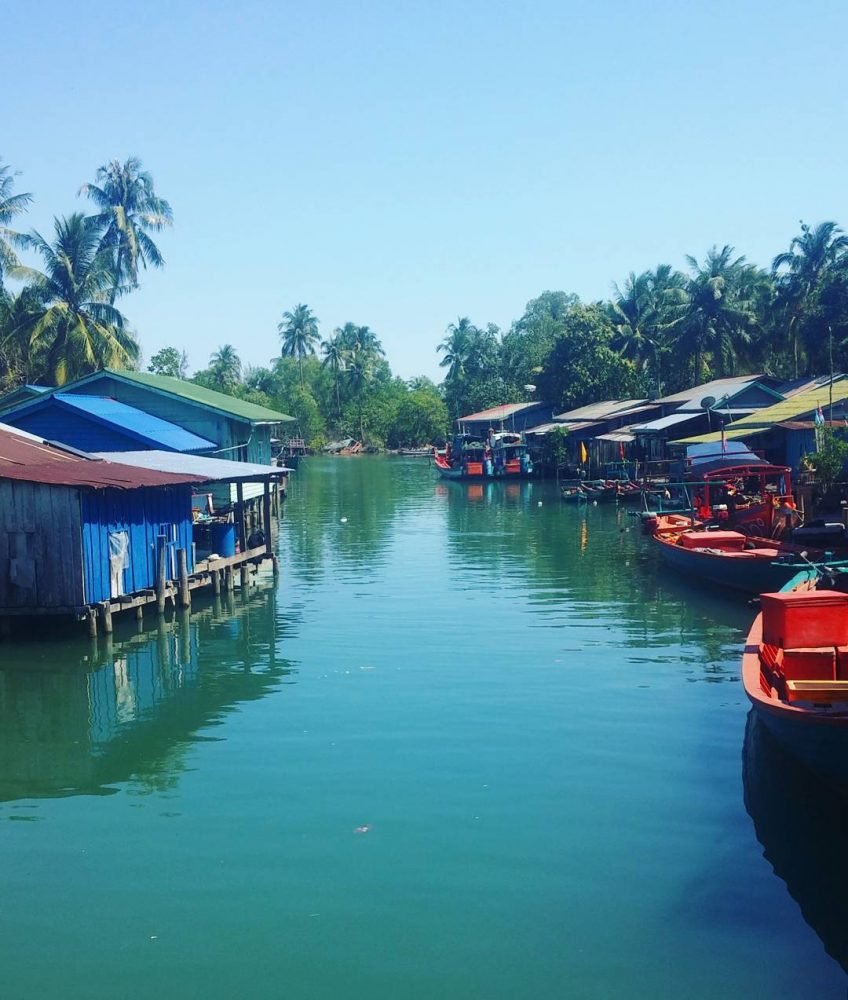The Only 2-Week Cambodia Itinerary You’ll Ever Need (By Someone Who Lived There)
When I arrived in Cambodia, I planned to stay for one month.
That month turned into a year, and I could easily have stayed for longer.
It’s pretty safe to say then, that Cambodia is certainly somewhere worth visiting, despite it often getting overlooked in favour of its more glamourous neighbours, Vietnam and Thailand.
Unfortunately, even the people that do visit Cambodia often pass through very quickly.
They rush through the temples of Angkor before making a brief stop in Phnom Penh to visit The Killing Fields, and heading on their merry way.

If you ask me, that’s a big mistake.
Cambodia is a country with a lot to offer, from its rich historical heritage and stunning ancient temples to serene countryside and tropical beaches.
In this 2-week Cambodia itinerary, I’m sharing my best recommendations for first-time visitors to the Kingdom.
It includes must-see landmarks like the temples of Angkor, poignant historical sites, and hidden gems that most tourists never get to see.
Are you ready? Then let’s get into it.
Here’s the only 2-week Cambodia itinerary you’ll ever need.

The Only 2-Week Cambodia Itinerary You’ll Ever Need (By Someone Who Lived There)
Days 1-3: Phnom Penh
Day 1: Arrive in Phnom Penh
Your journey begins in Phnom Penh, Cambodia’s chaotic capital.
After you’ve checked into your hotel and rested a little, head to the bustling riverside promenade where you can enjoy a leisurely walk and take in views of the Tonle Sap and Mekong Rivers.
- What to See: The Royal Palace and the Silver Pagoda. These iconic landmarks, adorned with golden roofs and intricate carvings, showcase Cambodia’s regal architecture.
- Evening: Relax with a sunset cruise on the Mekong River. This sunset river cruise costs less than £10 and includes unlimited beers and a BBQ buffet!
Day 2: Cambodia’s tragic history
Cambodia’s history is heart-breaking, but I strongly believe that we owe it to the country to educate ourselves about its tragic past.
On your first full day in Cambodia, you should spend time learning about Cambodia’s Khmer Rouge era.
- Morning: Begin at the Tuol Sleng Genocide Museum (S-21 Prison), a former school that was turned into a detention and torture centre during Pol Pot’s evil regime.
- Afternoon: Head to the Killing Fields of Choeung Ek, located about 30 minutes outside the city. An audio tour will provide insights into the atrocities that took place here.
- Evening: Enjoy dinner at a riverside restaurant. Phnom Penh has the best food offerings in the country, offering everything from traditional Khmer dishes to world cuisine, and even international fast-food chains.

Top tip: When visiting S-21 and The Killing Fields, tuktuk drivers will bring you to both sites and sit and wait for you until you’re finished, before taking you to the next site. This is how I visited both sites when I was in Cambodia.
If you don’t fancy haggling with the drivers or you’re in need of some A/C, this tour costs about £15 and includes hotel pick-up/drop-off, an English-speaking guide, and an air-conditioned van.
Day 3: Local culture & transfer to Siem Reap
Spend your final morning in Phnom Penh exploring more of the city’s cultural attractions.
- What to See: Visit Wat Phnom, the city’s namesake temple, and explore the Central Market, an interesting art deco building packed with vendors selling everything from souvenirs to street food. If you’re feeling really brave, try balut, a fertilised duck egg that locals eat because they believe it brings them strength. You can read more about the controversial egg here.
- Afternoon: Take a bus (6-7 hours) or hop on a short flight to Siem Reap, the gateway to the Angkor temples.
Pro tip: Public transport in Cambodia can be really hit or miss. I recommend using the website 12Go to compare routes, prices, and ratings of the various bus and private transfer companies in Cambodia.
When I was in Cambodia, none of the bus companies offered online bookings, so I had to visit the bus stations in person the day before I planned to travel. Being able to instantly book and receive my ticket on my mobile would have been a game changer back then!
Days 4-7: Siem Reap
Day 4: Angkor Wat sunrise & temple tour
No trip to Cambodia is complete without visiting Angkor Wat, which is actually the largest religious monument in the world.
One of the most popular ways to visit Angkor Wat is by booking a sunrise tour.
Now full disclosure: I did not do this, because I was way more interested in staying up late and sleeping in than seeing sunrise. However, everybody I met that did visit Angkor Wat at sunrise said that it was a really beautiful experience.

The best way to ensure you’re getting a good tour operator is by booking a tour with plenty of good reviews. This one, on GetYourGuide, has almost 4000 positive reviews, so it’s definitely one that I’d recommend.


- Morning: After sunrise, explore Angkor Wat’s expansive grounds. Continue to Angkor Thom, the ancient city that houses the Bayon Temple, famous for its giant stone faces. End your morning at Ta Prohm, the ‘Tomb Raider’ temple, known for its atmospheric ruins entwined with massive tree roots. This was my favourite temple of the three.
- Afternoon: Take a break and enjoy lunch in Siem Reap before heading to less-visited temples like Pre Rup or Banteay Kdei.
- Evening: Relax with a traditional Khmer massage or explore Siem Reap’s vibrant night markets.
Day 5: Explore beyond Angkor Wat
There is more to Siem Reap than Angkor Wat.
If you enjoy cultural tourism, spend today exploring some lesser-known but equally fascinating sites.
- What to See: Banteay Srei, also known as the ‘Citadel of Women,’ is famous for its intricate pink sandstone carvings. Preah Khan, a sprawling temple complex, is also well worth a visit.
- Evening: Discover the hub of Siem Reap nightlife on Pub Street. This is the place to be when the sun goes down over the city, and I’ve spent many a night here! My bar of choice was always Angkor What? (in fact, I still have a t-shirt from this bar!).


Day 6: Tonlé Sap
By now, you’re probably getting a little tired of temples, so it’s time to try something different and immerse yourself in local life.
- Morning: Take a guided boat tour of Tonlé Sap, Southeast Asia’s largest freshwater lake. You’ll pass by floating villages like Kampong Phluk, where you’ll see houses on stilts and get a glimpse of life on the water. This boat tour is with a professional tour guide and has over 2000 positive reviews!
- Afternoon: Participate in a cooking class to learn how to make traditional Khmer dishes. I love to take cooking classes when I travel, because what’s better than being able to recreate your favourite dishes at home? This cooking class takes place in a local’s home and includes a trip to the local market and a 4-course meal, including fish amok and Tom Yum soup.
- Evening: Relax with a drink at one of the many rooftop bars overlooking Siem Reap.
Day 7: Relax & transfer to Battambang
Spend your final morning in Siem Reap at leisure. If you fancy, pay a visit to the Angkor National Museum to deepen your understanding of the Angkorian era.
In the afternoon, take a bus (3 hours) or private car to Battambang.
Days 8-9: Battambang
Day 8: Bamboo train & Cambodian history
Battambang offers a glimpse into the country’s rural charm, and it was one of my favourite places to visit in Cambodia. It’s also far less touristy than Siem Reap and Phnom Penh!

- Morning: Start your day with a ride on the famous Bamboo Train, a quirky and fun experience that takes you through scenic countryside. The Bamboo Train was created after the Khmer Rouge destroyed the country’s infrastructure, including the railway system, and despite only travelling at 40mph, it’s a pretty hair-raising experience!
- Afternoon: In the afternoon, visit Phnom Sampeau, a hilltop site home to the Killing Caves, which serve as a memorial to victims of the Khmer Rouge. Like the Killing Fields, this is an emotional but important place to visit. If you stay for sunset, you’ll be rewarded by the unique site of thousands of bats emerging from nearby caves at once.
- Evening: It’s time for an evening at the circus! Phare Battambang Circus is made up of students from the local performing arts school, and the ticket money goes directly to the performers, as well as free arts education programs, trainings, and workshops at Phare Ponleu Selpak. This is a really great way of enjoying some evening entertainment while supporting a local community.

Note: Since 2020, an additional bamboo train has been set up in Battambang. This ‘new train’ offers a much ‘cleaner’ experience, and is more like something you’d find at a children’s amusement park than an authentic historical experience. If you’re confused about which bamboo train to take, I recommend taking the old/original train, which is the one I rode.
Day 9: Art & village life
Battambang is known for its art scene and laid-back vibe, so spend your second day here getting acquainted with that side of the city.
- Morning: Explore local art galleries and workshops, such as Romcheik 5 Art Space, an art gallery with an aesthetic rooftop café serving delicious local and international dishes.
- Afternoon: Take a countryside bike tour to see traditional Khmer houses, rice paddies, and small villages. This is a great way to interact with locals and learn about their way of life.
- Evening: Depart for Kampot via overnight bus or private transfer.
Days 10-12: Kampot & Kep
Day 10: Discover Kampot
Kampot is a charming riverside town with a colonial past and a laid-back atmosphere.
It’s one of my favourite places in Cambodia, and sees a fraction of the tourism that Phnom Penh and Siem Reap do (but there is still a great backpacker scene here – I have several friends that own hostels and guesthouses in Kampot).

- Morning: Stroll along the riverside and explore the Old French Quarter, with its faded colonial buildings.
- Afternoon: Visit a local pepper farm to learn about Kampot’s world-famous pepper.
- Evening: Watch the sunset by the riverside with a cocktail in hand.
Note: If you wish to take a bus to Kampot, you’ll be taking a 10h sleeper bus. You can also take a private taxi and arrive in around 6h30.
Day 11: Day Trip to Kep
Just a short drive from Kampot, Kep is a small coastal town known for its seafood, specifically crab (incidentally, I had the best crab of my life in Cambodia, so I definitely recommend trying some while you’re there!).
- Morning: Visit the crab market and sample fresh crab cooked with Kampot pepper.
- Afternoon: Take a boat to Koh Tonsay (Rabbit Island), a peaceful retreat where you can swim and relax on the beach.
- Evening: Return to Kampot.
Day 12: Bokor National Park
Rent a moped and spend the day exploring Bokor National Park, a beautiful area with lush forests and historical ruins.
When I was in Kampot, a bunch of people I met in my hostel and I decided to do this, and it remains one of my favourite travel memories ever.
- What to See: The abandoned French Bokor Hill Station, a collection of abandoned French colonial buildings, Popokvil Waterfall, and a giant Buddha statue.



Days 13-14: Koh Rong
Day 13: Arrive in Koh Rong
And finally, to end your trip in the most perfect way, enjoy a couple of days on the paradise island of Koh Rong.
This is where I lived and worked for 12 months (unfortunately, the hostel I worked in has since closed down), and the beaches here are some of the nicest I’ve ever seen.
To get here, you need to travel to Sihanoukville by bus, then take a ferry to the island of Koh Rong.
- What to Do: Check into your beachfront accommodation and spend the day relaxing on the pristine white-sand beaches.
- Evening: Enjoy a fresh seafood dinner at a beachside restaurant. Most of the restaurants offer BBQ dinners, which I definitely recommend.


Day 14: Island paradise
- What to Do: Go snorkelling or paddleboarding in the clear turquoise waters. Many tour operators offer boat trips to nearby snorkelling spots. The company that I recommend is Adventure Adam. It’s owned and operated by an English guy named Adam, and his tours are by far the safest and most informative and action-packed ones you’ll experience on the island. They cost a few dollars more than the others, but they’re worth it, trust me.
- Evening: Take a night swim to see bioluminescent plankton – a bucket list experience you won’t forget.



Final Thoughts
And there you have it – the ultimate 2-week Cambodia itinerary!
Cambodia is so much more than just Angkor Wat or the Killing Fields. It’s a country bursting with history, culture, natural beauty, and the kind of warmth and hospitality that stays with you long after you’ve left.
Whether you’re savouring fresh seafood in Kep, unwinding on Koh Rong’s idyllic beaches, or witnessing the sunrise over Angkor Wat, you’re sure to find something that makes you fall in love with Cambodia.
That’s all I’ve got for this time, but as always, leave any questions you have in the comments section below and I’ll be sure to get back to you!
Until next time,
XOXO
If you liked this article and would like to support my work, please click the button above to donate a couple of bucks and buy me a coffee. The ad revenue that I receive on this website is minimal, so support from my readers enables me to keep creating content that you (hopefully!) love to read.
Disclaimer: Travelling Jezebel contains affiliate links. If you make a purchase on a recommended site, I may make a small commission at no extra cost to you.

A great article, very informative. Cambodia seems like such an amazing country, maybe I’ll get there one day 🙂